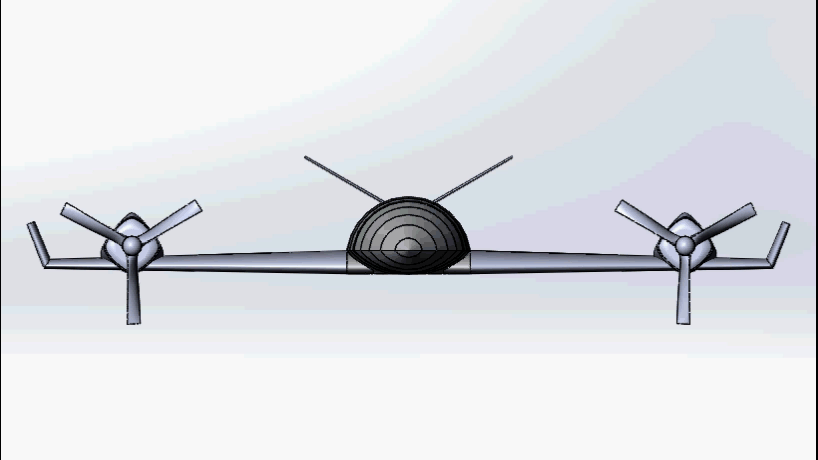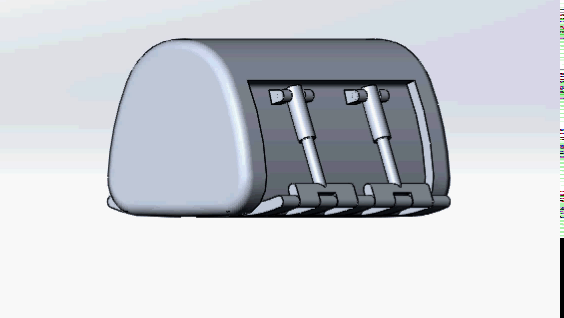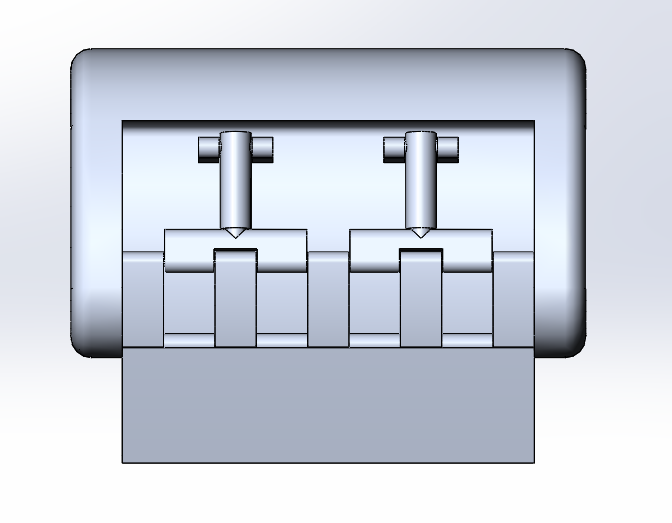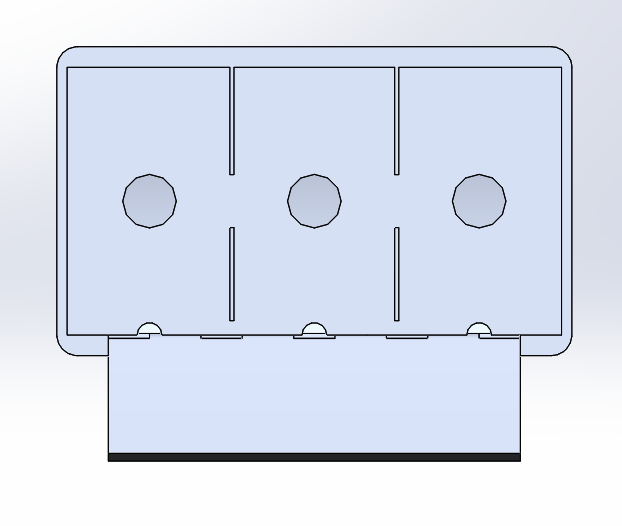Project Category: Mechanical
Join our presentation
About our project
Wildfires are becoming a common problem, and the number of forest fires each year is rising. Aerial firefighting fleets are old and aging every year. As the maintenance cost for these aircrafts are increasing, with the technological advancements made in drone technology. We believe that the use of large scale drone technology will be a solution for aerial firefighting.
The problem statement for this project is to conceptualize and analyze the strategic implementation and the design of unmanned drone technology for the use of fighting wildfires. With this in mind, our project can be split into 2 major parts. The first being an analysis of how feasible our project is, along with a strategy, and the second being the conceptual design.
Meet our team members

Tyler Davis

Adam Cairns

Brandon Chin

Elias Clarke

Jarra Ahmed
Details about our design
INITIAL RESEARCH
Our initial research started with the field of aerial firefighting, existing water bombers, and drones. The objective of the background research was to gain knowledge on the strategies, technology, equipment, and operation of aerial firefighting missions, drones, and to establish design parameters for our drone. We were able to meet with B.C Wildfire Services and Perimeter Solutions to gather information on these topics.
Through B.C Wildfire Services, we learned that their focus was mainly on retardant based aircrafts rather than water skimming ones. They had 6 to 8 air tankers groups that are retardant based with each group containing 4 to 6 aircrafts. Focus is placed in retardant as it changes the surface tension of the water so it can wrap around fuel better and can break down waxy material on needles to penetrate better. From the time a wildfire is alerted to when aircrafts take off, the whole process takes 1 hour to complete. For their technique, they employed the one strike concept, which delivers a large payload to the fire all at once which smothers the fire, as opposed to dropping water in intervals.
The figure on the right shows three different scenarios depicting varying deployments of firelines around a fire. Green areas depict unburnt land, while black areas depict burnt land. Finally, the first column of graphs shows when the holding line was initially deployed, and the second column shows a progression in time when the fire has had a chance to continue burning. This was researched as it allows for a better understanding of how exactly the techniques used to combat forest fires work, and the general strategy that should be employed for maximum effectiveness.
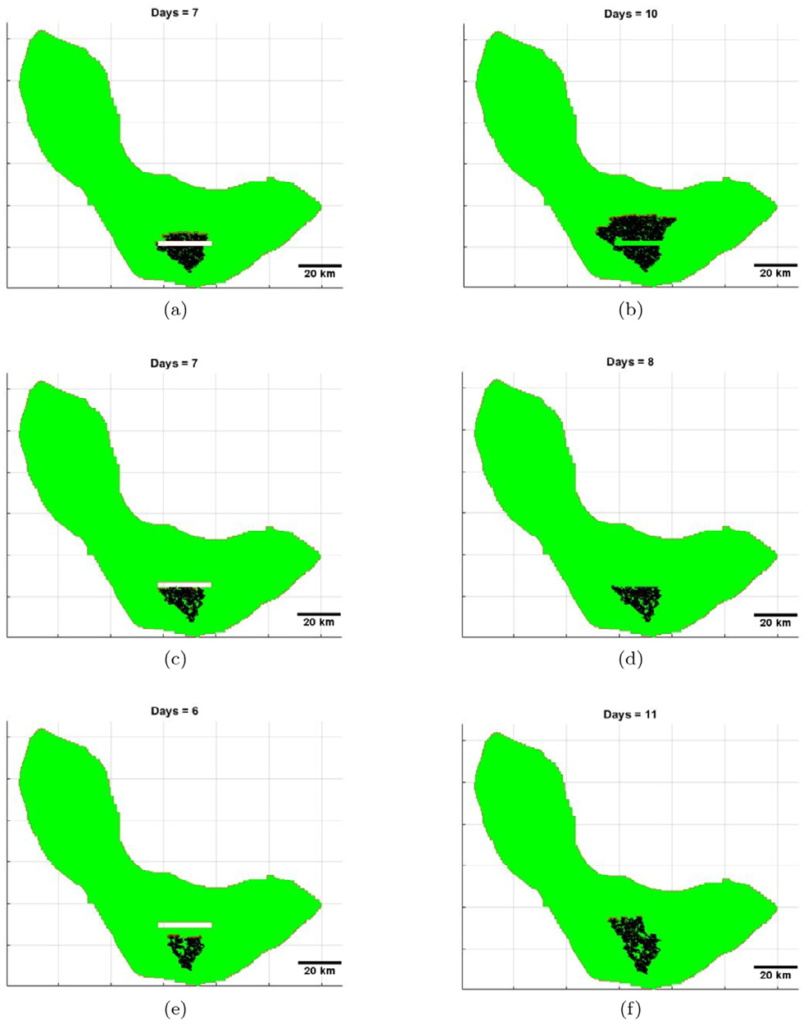
[1] K. Mutthulakshmi et. al., “Simulating forest fire spread and fire-fighting using cellular automata,” Chinese Journal of Physics 65, 2020 (pg. 642-650).
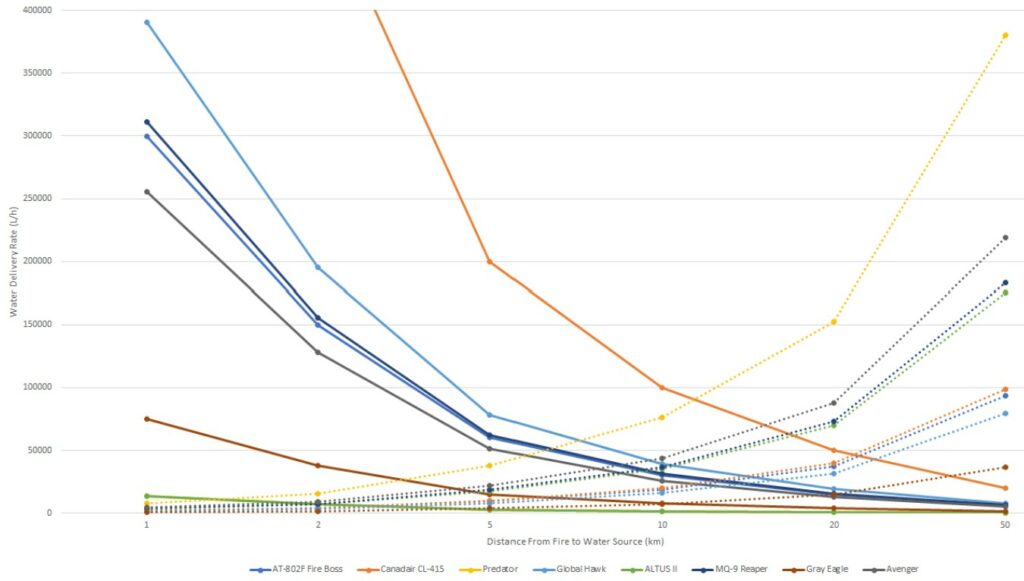
As for research into existing water bombers, the type of aircraft were selected based on both size and prominence of use in Canada. Research was done into military drones as they are typically the most advanced and have quick adoption of new drone technology. A comparison graph was done which is shown in the figure above. The plot shows the water delivery rate in litres per hour vs. distance for fire to water source in kilometers for a variety of aircrafts and drones.
STRATEGY
Our design focusses to address a sector of the firefighting industry which would most benefit from drone technology. This sector being to utilize the drone to fight small fires and be a first line of defense for fires where no ground crew are present. This is done to prevent accidents with ground crew from occurring. Since our drone is smaller than any current water bomber in use, our fleet size will consist of 20-25 drones. The drone will drop fire lines using long-term fire retardant foam due to their effectiveness. And through our meeting with B.C Wildfire Services, the drone will also drop water at 30 meters above the fire in order to cover the area more effectively.
ADVANTAGES OF DRONE TECHNOLOGY
- Fleet Size
Our drone will operate in a large fleet size when compared with fleet sizes used currently. Due to this, each drone is less consequential. For example, in a fleet of 4 water bombers, one plane being unoperational results in a 25% decrease in payload capacity. On the other hand, in a fleet of twenty drones, one being unoperational results in a 5% decrease in payload capacity. The scalability of drones is advantageous as we can add or remove drones to our fleet based on demand.
- Safety
As water bombers are manned aircrafts, there is an inherent risk involved with aerial firefighting. With unmanned drones, the safety of the aircraft and pilots is greatly increased. There will also be less physical stress on the pilots as they can be located at a command center where making personnel changes is easy.
- Flexibility
The usage in drones is not limited to water bombing, as they can also assist in other areas of operations such as disaster relief assistance. Drones can also be equipped with sensors and thermal cameras for data gathering and real-time mapping of fire fronts. Which can be used to correctly set-up firelines.
- Compact
The benefit of having smaller drones is that they can be easily transported to more remote locations. They also have a shorter takeoff distance and can land in a variety of locations (e.g highways, dirt roads, and grassy fields). Having more compact drones can allow for greater space efficiency. Such as not needing the cockpit so more space can be allocated to the water payload size.
- Efficiency
Since drones are unmanned, they can be deployed quicker to the wildfire. Time is saved since pilots do not need to be briefed and prepared prior to a mission. They also do not need to travel to an airbase, since drones can be remotely operated. Thus, reducing overall response times. Lastly, the drones are able to communicate easier and quicker than pilots, meaning water bombing operations can be more organized for greater efficiency, putting out the fires quicker and more accurately. Drones can also operate 24/7 even in the harshest condition.
DRONE SPECIFICATIONS
Through our initial research, we decided on a fixed wing drone with two wing mounted engines. The drone is powered by the Rotax 912 which are turboprop puller style engines. With these engines, we can achieve a maximum speed of 340 km/h and a stall speed of 108 km/h. Our design also has a takeoff distance of 215 meters on asphalt.
As for the size of our design, our created drone is 4 m long, 8 m wide, and 2 m tall. It has a weight of 1450 kg (3200 lb), and an approximate carrying capacity of 580 kg (1280 lbs). We also have a dropping mechanism that uses a pair of doors that open sideways, using a linear actuator, and drops 620 litres of retardant. As we are transporting liquid, we incorporated a baffle design to our water tank in order to reduce sloshing (movement of liquid). We also incorporated a certain water tank cross section which we researched to be the best for roll stability and to reduce sloshing.
Our final wing uses the NACA 4415 airfoil, while the tail uses the NACA 0008 airfoil. The wing is unswept and tapered, with winglets at the end, and the tail uses a v-tail design at a 30 degree angle.
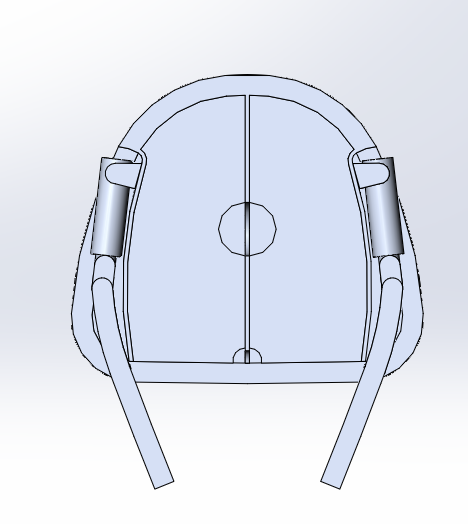
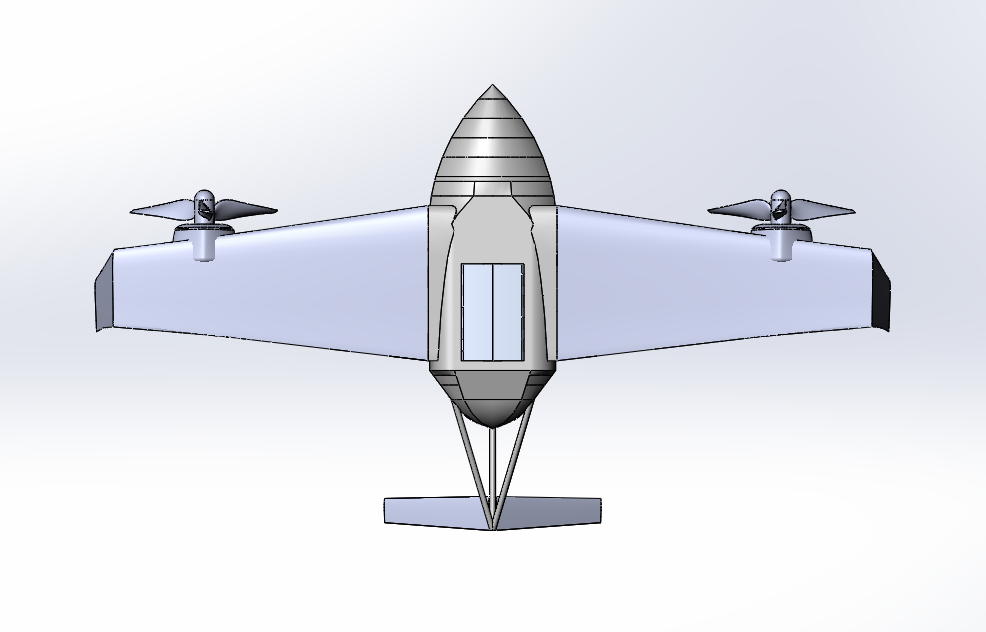
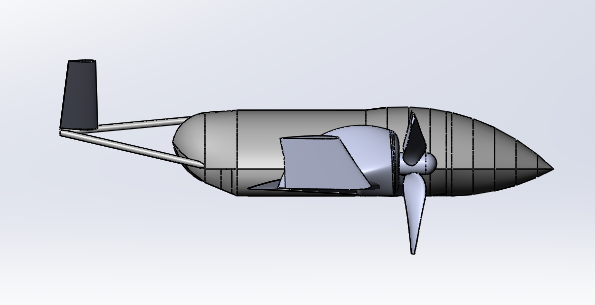
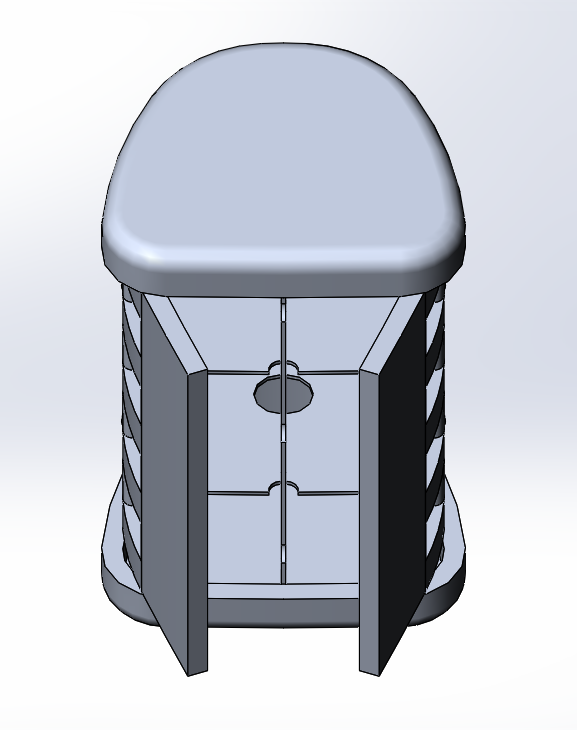
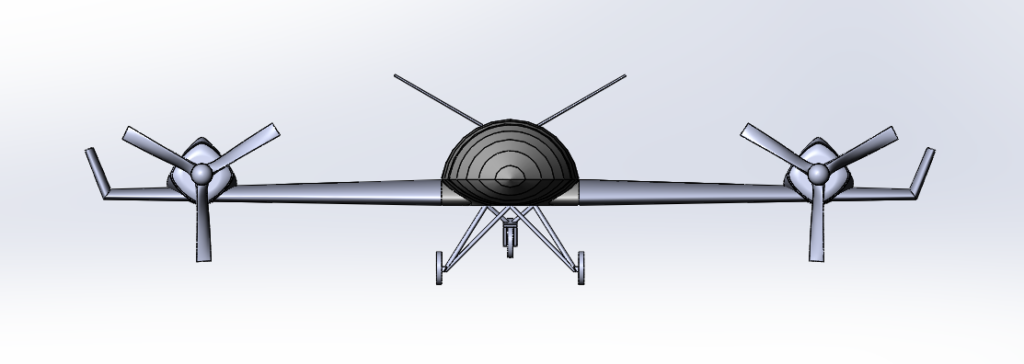
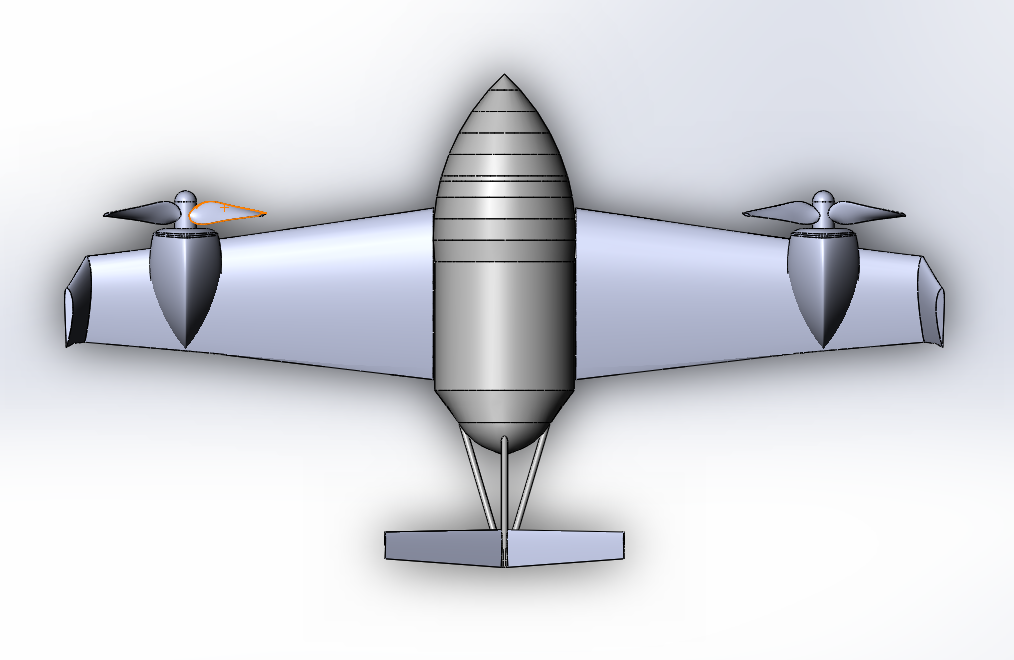
FEASIBILITY OF OUR DESIGN SOLUTION
Within practical measures we believe that our conceptual strategy and design would be a very effective solution, both in terms of cost and performance, for indirect aerial attacks of smaller fires. With the integration of a networked drone system with weather and fire detection systems a drone swarm could quickly be dispatched to recently ignited fires to trace retardant lines to either extinguish the fire or manage it’s spread for ground firefighters and other manned operations to plan and respond, saving money and potentially lives in the process.
Partners and mentors
We want to thank the many people who helped us with this project. Our sponsor Schuyler Hinman for giving us insightful feedback and resources during the progress. And our academic advisor Dr. Craig Johansen for providing advice to improve our design. We would also like to thank our course instructor Dr. Simon Li and teaching assistant Min-hyung Lee for providing insight and recommendation on our project throughout the academic year. We like to thank B.C Wildfire Services and Perimeter Solutions as they provided valuable insight into aerial firefighting and answered any questions that we had.
Our photo gallery
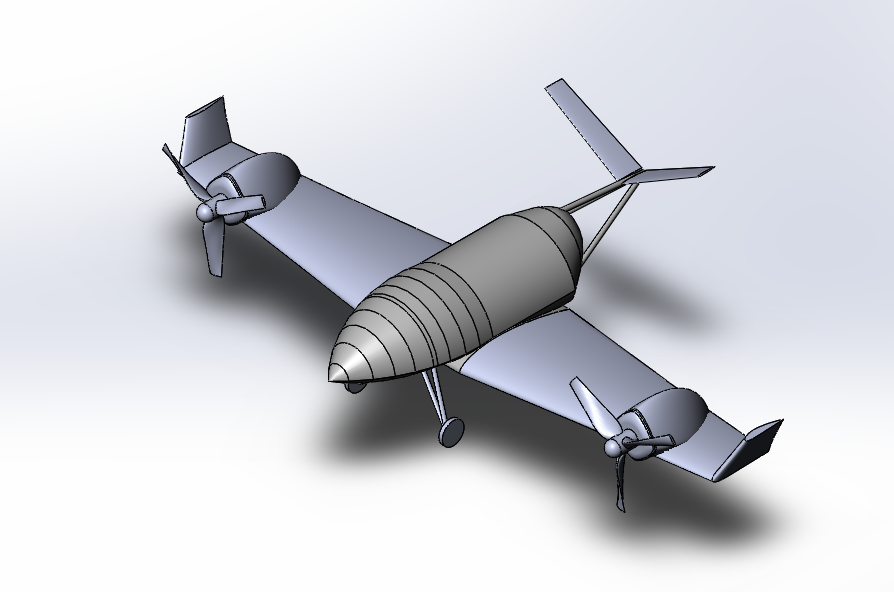
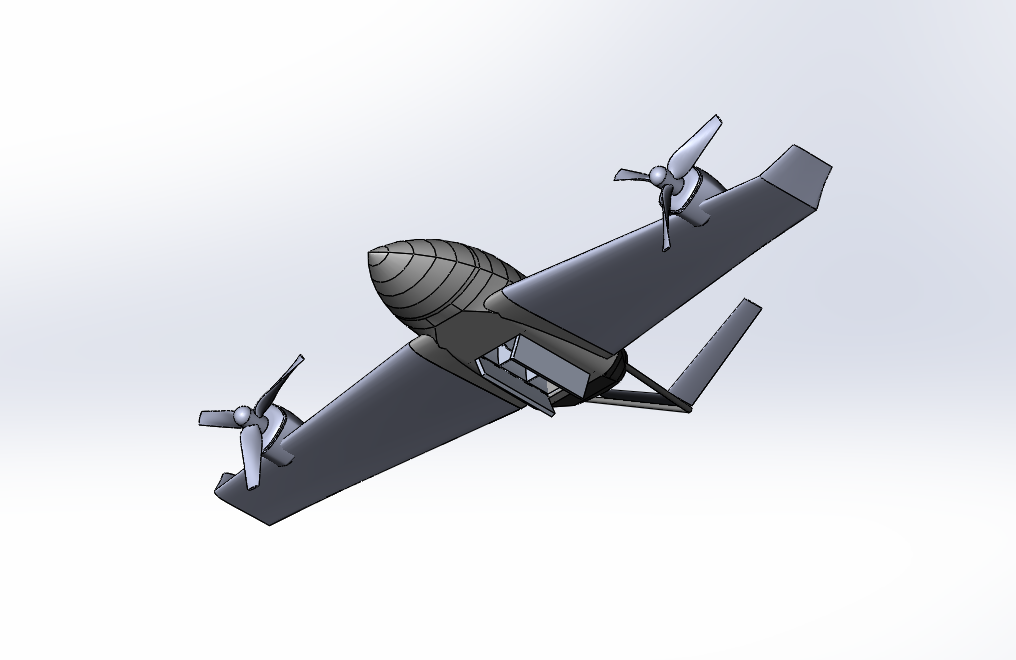
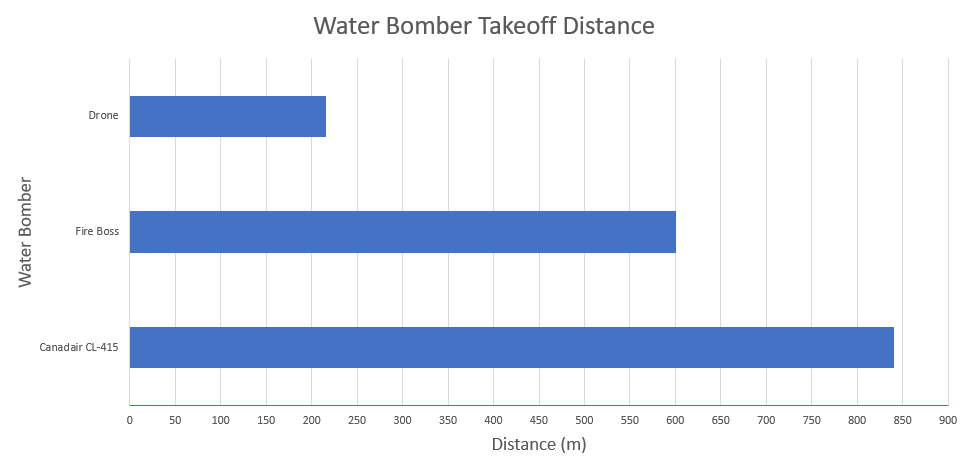
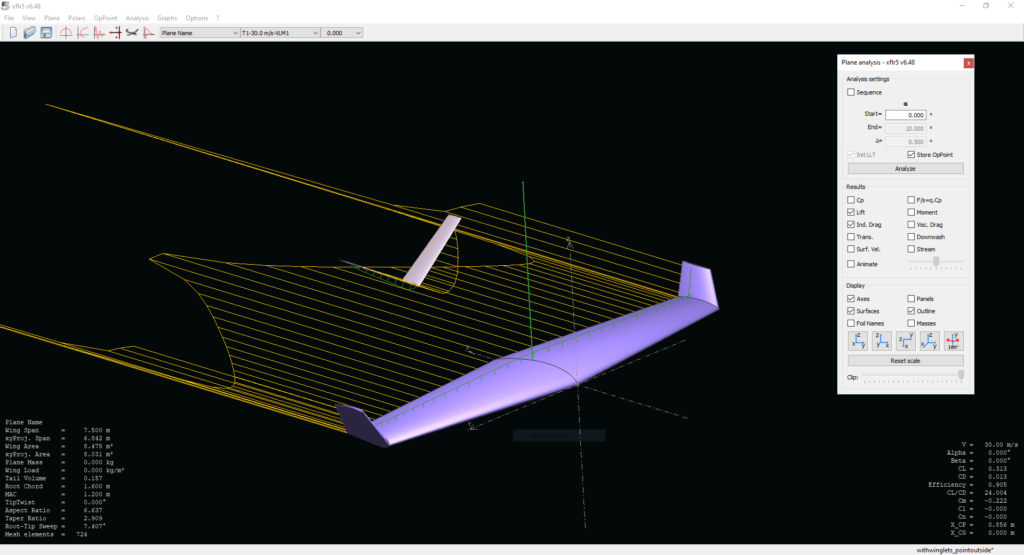
Final Wing Model 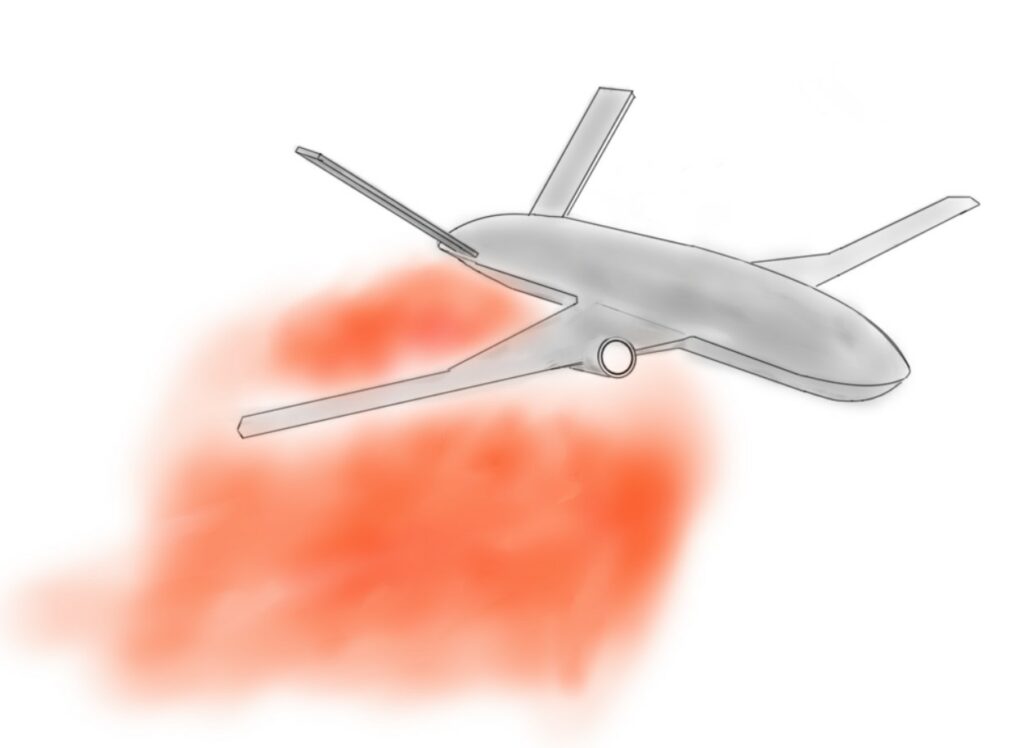
Initial Concept Design
